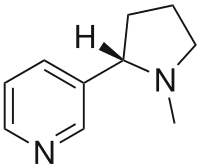
Photo from wikipedia
homozygous for a known TNSALP gene mutation. She had persistent hypercalcaemia, failure to thrive and at 3 months developed severe bronchiolitis requiring intubation and ventilation for 2 weeks. Following reports… Click to show full abstract
homozygous for a known TNSALP gene mutation. She had persistent hypercalcaemia, failure to thrive and at 3 months developed severe bronchiolitis requiring intubation and ventilation for 2 weeks. Following reports of dramatic improvements in mineralization for this previously untreatable disease in animal models and humans, asfotase alfa was commenced at 4 months (2 mg/ kg subcutaneously (SC) three times per week). Biochemical disturbances resolved quickly and a further episode of bronchiolitis at 5.5 months was managed with nasal prong oxygen only; no further invasive ventilation has been required. She showed marked improvement of mineralization on serial radiographs, with straightening of her femori (Fig. 1). Her linear growth has been steady. She has been making excellent developmental progress, with no ongoing issues. She had persistent craniosynostosis, which required cranial advancement surgery at aged 3, which was uncomplicated with resultant normal cranial shape. Calcification was noted on radiography at injection site but nothing was palpable clinically – this had largely resolved on follow-up radiograph 1 year later with increased injection site rotation and switching to 1 mg/kg SC, six times per week. Nephrocalcinosis had been noted on ultrasound prior to commencement of ERT, but had resolved by age 4. This successful outcome is reflected in the clinical trials showing improved survival and respiratory outcomes, with no significant side effects reported. We conclude that ERT should be strongly considered for this previously untreatable condition.
Journal Title: Journal of Paediatrics and Child Health
Year Published: 2017
Link to full text (if available)
Share on Social Media: Sign Up to like & get
recommendations!